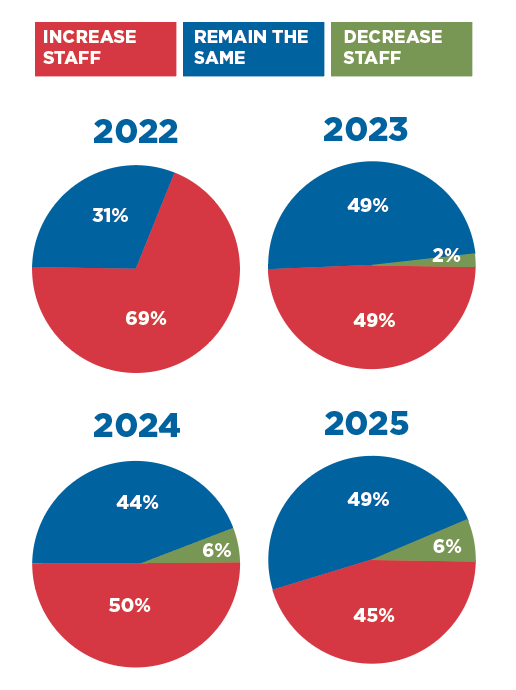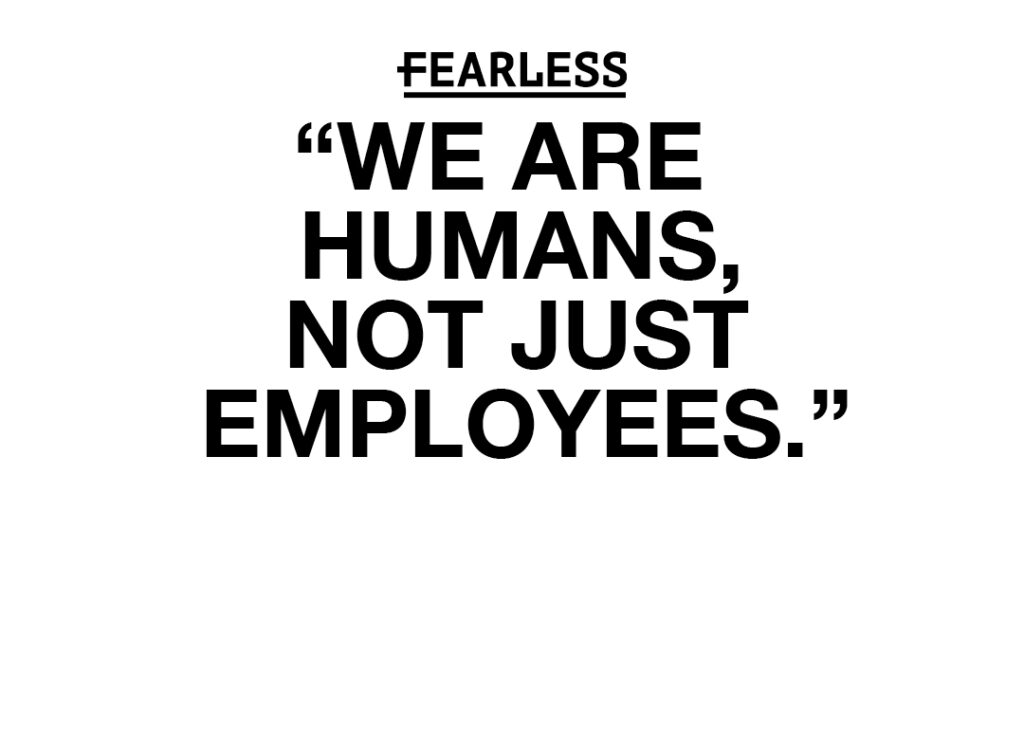Will you get a raise in 2025? Survey says it’s likely

Kathy A. Bolten Nov 1, 2024 | 6:00 am
3 min read time
769 wordsBusiness Record Insider, Workforce Development
Ninety-seven percent of employers who responded to Palmer Group’s annual salary survey plan to increase employees’ compensation in 2025, an increase from a year ago and a signal companies want to retain workers, David Leto, the company’s leader, said.
Palmer Group, in collaboration with the Greater Des Moines Partnership, released its annual salary survey on Nov. 1. Nearly 200 employers responded to the survey, which was launched in 2013. Respondents were from companies of varying sizes and sectors, said Leto, president and CEO of the employment group.
The survey began as a way to gauge employer compensation plans in the coming year. The survey now provides the temperature of the overall employment climate, including hiring plans and work options for workers.
A year ago, 95% of survey respondents indicated they planned to increase compensation and in 2023, 93% said they planned to offer raises. In addition, 78% of respondents indicated plans to offer raises of 3% to 4% to employees in 2025, an increase from 65% in 2024 and 53% in 2023.
Just 5% of respondents — the lowest percentage in the survey’s history — said they planned to increase wages 5% or more in 2025. In 2024, 18% of respondents planned to increase wages 5% or more.
Compensation trends
Ninety-seven percent of business leaders who participated in Palmer Group’s annual salary survey plan on increasing employees’ wages in 2025, an increase from 95% in 2024. Also, 78% of those surveyed indicated plans to give average raises of 3% to 4%, the survey shows.
SOURCE: Palmer Group
“I think organizations have increased salaries quite a bit over the last number of years, and they are calming down on that a little bit now,” Leto said.
During the pandemic, many companies laid off employees. When the health crisis ended, employers hired workers at a frenzied pace, Leto said. Now, employers are assessing their staffing needs, making sure workers are in the positions that fit their skills and that the organizational structure is set up correctly, he said.
“I think companies have figured out their plans for growth,” Leto said.
The survey showed that 45% of respondents planned to increase staff in 2025, down from 50% in 2024. In addition, 94% of respondents said they would be hiring for permanent roles; 5% said they would be hiring for contract-to-hire positions.
Iowa’s workforce is shrinking, making finding workers difficult. Employers will likely turn more to technology in an effort to streamline and improve business operations, Leto said. Fourteen percent of respondents indicated plans to focus on implementing new technologies in 2025, up from 8% in 2024.
“Employers need to continue to find ways to make their workers more productive,” Leto said. “Technology and automation help improve efficiencies and improve production.”
Companies’ hiring plans
Forty-five percent of companies who participated in Palmer Group’s annual salary survey plan on hiring new staff in 2025, a decrease from 2024, survey results show. Six percent of companies plan on reducing staff.
SOURCE: Palmer Group

Iowa employers are also stepping up efforts to retain their current employees. Iowa’s quit rate of 1.7%, which is below the national average, is a sign workers aren’t changing jobs as quickly as they did a couple years ago, Leto said.
“People are still entertaining opportunities to better their career,” he said. “But it’s not the mass quantities that we saw a couple years ago. … We have to work a little harder to find the talent for those jobs.”
Other highlights from the survey include:
- Sixty-nine percent of respondents plan to focus on hiring, retention and training in 2025. Just 10% of respondents plan to focus on succession planning, a drop from 15% in 2024.
- Thirty-eight percent of respondents plan on workers being in the office full time in 2025, an increase from 2024, when 33% indicated employees would be in the office full time. Additionally, 32% of respondents indicated they would offer hybrid work schedules, up from 25% in 2024.
“Demand for employees to be in the office more has increased,” Leto said. Several employers have increased in-office requirements to three or four days a week; a year ago, many required employees to be in the office two or three days a week, he said.
“A lot of companies have been really concerned about the culture in their building and their ability to retain workers,” Leto said. “I can see more companies continuing to work toward more in-office time.
“I don’t think the hybrid model is going away. I think leaders see the benefits of in-office collaboration.”
More online
To read the entire survey, click here.

Kathy A. Bolten
Kathy A. Bolten is a senior staff writer at Business Record. She covers real estate and development, workforce development, education, banking and finance, and housing.








